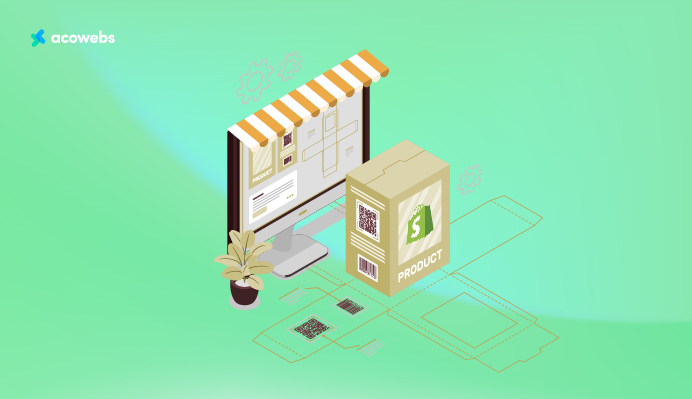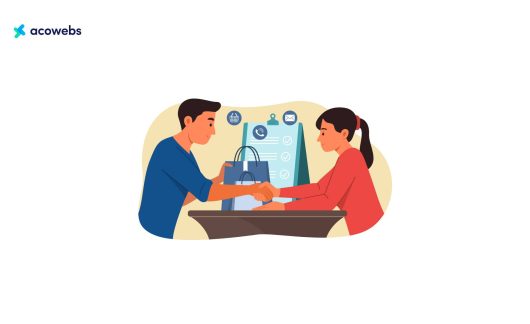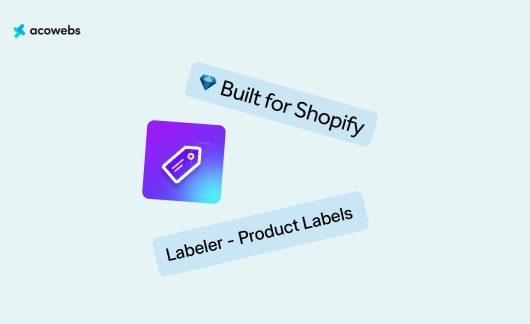From 2024 to 2025, businessmen should boldly transition into private label branding and Shopify is the perfect place for that. If you are bored with your regular job, seeking for an additional income stream that may become a full business in the future, or you have a hobby to monetize, Shopify helps you to make it happen.
But here’s the catch: entering the private label market is not as simple as putting your badge on a product and expecting a sale. It is about creating that image of a company that people can relate to and that customers will stick with because they have gotten value for their money. It is about producing a product people look forward to buying and making sure that they get it from your store.
This is your guidebook no matter if you are new to the game or have already had several businesses under your belt.
This is how to grow your private label business with Shopify.
Step 1: Finding the Right Niche
In particular, when it comes to private labeling, your niche is the key. In the year 2024, passive selling of any product or service will not be sufficient. You need to be innovative. You have to look for a topic that you are interested in but also that has the possibility of making you money.
But how to choose the right niche? Here’s how:
Understand the Market Demand
You must first determine market demand. That’s about making sure you have enough customers who want your product but not so many that you won’t stand out.
- Use Tools such as Google Trends: Check what people are looking for. Use Google Trends to see what’s happening in different regions in real time. This is how you can spot trends.
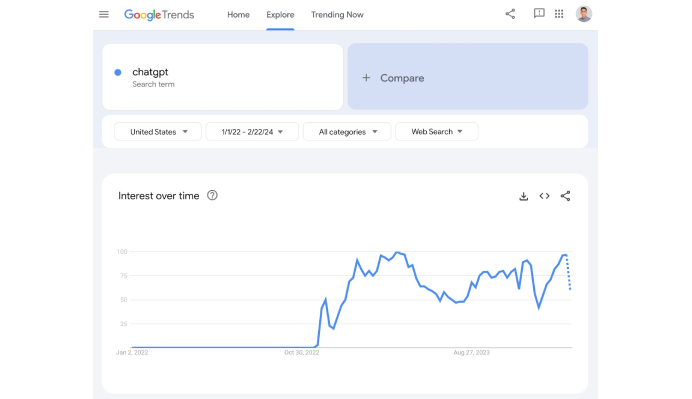
- Learn about E-commerce Websites: Take a look at popular websites such as Amazon, Etsy, or Shopify’s app store. What’s working? What’s not? Are there product gaps?
- Social Listening: Connect with X, Reddit, Instagram, and TikTok. What are people talking about? What are they complaining about? Social media is a minefield of uncovering market gaps.
Explore Your Passions and Skills In More Detail
When researching, take into account your interests and knowledge. If there’s a demand for a product, do you have the knowledge or the desire to develop a brand? If you have an in-depth relationship with your target audience, everything will be easier.
- Passion to Profit: Just as much as you need to love what you’re doing, you need to find a niche with obvious commercial potential. Look for a business where your passion intersects with profit.
- Solve Issues, Don’t Sell Things: The best private label brands solve an issue. You want your product to satisfy an obvious market need with ease, innovation, or differentiation.
Create a Brand Story
Your brand story is critical. You can’t just have a really good product; your audience needs to understand the “why” behind your business. A good story has an emotional impact that enables customer retention. Make sure that you are explicit about your mission, your values, and why you are passionate about your product.
Step 2: Product Sourcing
After you’ve found your niche, you need to consider where to source your products. This is one of the most critical steps you take. What you sell will define your brand image.
Select Between Private Label and White Label Options
Both let you rebrand existing items, but there’s a subtle difference:
- Private Label: You own the product, packaging and branding. Your product will not bear the brand of the original manufacturer.
- White Label: You customize the product, add your logo. It’s faster and cheaper, but it’s not as original as a private label.
Finding the Right Suppliers
The next thing is to get suppliers who are able to deliver the products on time. The wrong supplier will destroy your brand much quicker than “failed launch.” Here’s how to choose the right one:
- Do Your Due Diligence: Alibaba, ThomasNet, SaleHOO and similar platforms can be helpful when in search of the manufacturers and wholesalers. Do not rush to work with the first vendor you come across. You should avail these services; request for the samples, check out these reviews, request for references.
- Location matters: Consider whether you are purchasing from an in-house supplier or from an out-of-home supplier. Local suppliers may cost more but have a faster turnaround time and excellent customer service.
- Assess Product Quality: Always ask for samples. You might want to skimp on this to save time, but it’s not the right choice. The quality of your product will reflect the brand’s image.
- Make Sure to Reverse-engineer Minimum Order Quantities (MOQ): Do not forget to reverse engineer the MOQ, at least first. Don’t commit to large orders before you have a clue about whether your product is going to sell.
Packaging and Customization
Your packaging sets the stage for your brand. Make it count.
- Brand Identity: Your packaging should align with your brand’s values, colours, and messages. If your branding is sustainable, so is your packaging.
- Go Green: People care today about the environment. Providing environmentally friendly packaging or recyclables is an important point of differentiation.
- Unboxing experience: Packaging isn’t an obligation, it’s a part of the experience. Creating a social media hype through a unique unboxing experience will attract customers.
Step 3: Launching Your Shopify Store
To convert your traffic into buyers, designing a beautiful and functional Shopify store is of paramount importance. Your store should represent you as an extension of your brand, giving you an easy to use shopping experience.
Choose the Right Theme
The Shopify theme store contains numerous pre-designed templates. Choose one that fits your industry and brand, but keep it clean and readable. Do not overdo the design. An unordered store will disincline people.
- Mobile Optimization: A majority of customers will access your shop from a smartphone. Your theme must be mobile-friendly. Otherwise, you’re going to miss out on sales.
- Experience: Your store’s navigation should be easy to use. Think about the customer journey, how do you allow them to discover the products they are interested in and make their purchase easily?
Craft Perfect Product Pages
This is the stuff that happens on your product pages. You would like your customers to have all the information that is required in order for them to be able to purchase from you.
- Professional Photos: Spend your money on professional pictures that show the best side of your product. Everyone wants to see the products they’re buying; multiple angles, enlargements, portrait shots.
- Detail Descriptions: Write crisp, relevant descriptions that showcase the value of your product. Don’t just describe the features, tell your customer how it solves a problem.
- Customer Feedback: Social proof works. Make sure your customers leave a review if they are satisfied with the product or service. Reviews create credibility and turn visitors into customers.
Add Essential Apps
Shopify’s app store also contains a host of tools to enhance your store’s functionality. Here are some must-haves:
- SEO Optimization: You can use apps such as SEO Booster or Plug-in SEO to rank your store in search engines.
- Email Marketing: You can utilize apps like Klaviyo or Mailchimp to create and organize your email list from the beginning until returning customers come your way.
- Live Chat: Use a service such as Tidio or Shopify’s built-in live chat to give your customers instant support.
Step 4: Launching Your Brand
You have your Shopify store set up, and now it is time to let others know it exists. Here is the way to start with your marketing plan.
Social Media
It is in the social sites that things get real. From Instagram to TikTok these are the places that belong to your brand. But don’t just post anything on your page or share any random post on your social media. Be strategic.
- Content That Resonates: Create content that would interest your audience, something which they would like to achieve, something which they are going through, or something which they believe in. This can range from instructional videos or content created by your customers to the scenes of your company’s work.
- Engage with Your Followers: Don’t just post and ghost. Engage in the comment section, conduct polls and polls as well as engage your followers. Social media is not a marketplace of selling products, it is a platform of establishing relationships.
Leverage Influencers and Micro-Influencers
Influencers are quite effective in marketing your private label brand, but you need to select the right one. Ordinary people with fewer followers and more engaged audiences can be just as persuasive as stars but for less money.
- Build Authentic Relationships: Engage with influencers that have similar ideals to your business. Ensure that those they follow are within your niche.
- Track ROI: Always use tracking links and promo codes in your influencer campaigns to know the impact. This will assist you in the right direction towards efficiency and increased return on investment.
Email Marketing
e-mailing is still another way of communicating with the customers because it proves to be rather efficient. This is about abandoned cart emails to follow-up emails after customers have had their purchase, email marketing can increase your revenue and keep your audience hooked.
- Segmentation: Email marketing messages should be customized depending on the buyer’s journey the customer is in. New subscribers should be given a welcome message and email series while the repeat customers should be given loyalty incentive or special offers. This means that personalizing the type of information that is being sent to the customer segments will go along way in enhancing the response rates to the emails and also increase sales.
- Automated Flows: Campaigns such as the use of Klaviyo or Mailchimp can also be utilized in extending the email flows. Reminder for the abandoned cart, recommended products, relevant offers – all this can be performed in the background, keeping the brand active.
Search Engine Optimization (SEO)
You have a great product and a fabulous store but are your customers able to locate your store? It is the long-term strategy that makes your Shopify store relevant for the search engines when clients search for products similar to yours.
- Keyword Research: Use Google Keyword Planner, SEMrush, Ubersuggest to look for your niche keywords that are highly competitive. Use them to improve your product titles, descriptions and blog posts.
- Content Marketing: Create a blog where you publish valuable content on your topic. This will help you to establish authority and attract organic traffic to your shop.
- On-page SEO: Make sure every product page is SEO friendly. These range from composing distinctive product descriptions, using alt text on images, and incorporating keywords in title and meta description.
Paid Ads to Boost Your Visibility
Paid advertising is a very effective method of accelerating the process of traffic generation to your Shopify store. But it is necessary to act wisely.
- Facebook and Instagram Ads: These platforms are good for brands that rely on images. Use carousel ads or video ads to advertise your products. Make sure that your ads are relevant to interests, behaviors and demographic to help you to get to the right audience.
- Google Ads: If you want to go straight to the point, try Google Ads. Concentrate on the search ads which are specific to the specific keywords relevant to your products. Pay attention to how much you spend on your ads and always optimize your targeting to yield positive results.
Step 5: Optimize Your Store for Conversions
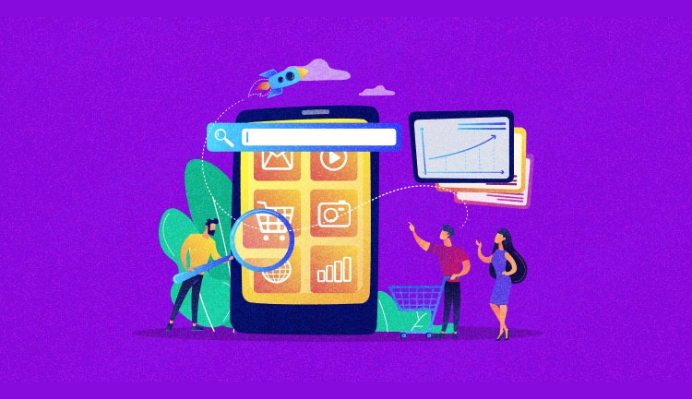
The question is, once you have traffic coming to your Shopify store, the challenge is turning that traffic into customers. That takes ongoing improvement to provide your audience an easy, quick, and enjoyable shopping experience.
Streamline the Checkout Process
Your best interest is to prevent people from deleting their carts during checkout. You want the process to be as easy as possible.
- Guest Checkout: Don’t ask visitors to sign up. Giving a guest checkout reduces friction and accelerates the purchase process.
- Multiple Payment Options: Make sure to provide multiple payment options such as credit/debit card, PayPal, or newer options such as Apple Pay or Google pay. The more options you offer, the quicker your customers can purchase.
- Explicit Shipping Details: Tell the customers what shipping fees and delays are. People love knowing exactly when their order is arriving, and additional shipping costs are a turn-off.
Use Urgency and Scarcity
Making things feel important or limited is a way to get sceptical customers to act. Expired dates, countdown clocks and stock low-on alerts are all excellent ways to encourage shoppers to make up their minds before they head out the door.
- Flash Sales/Time-Related Coupons: Use flash sales or limited time coupon codes to promote purchase.
- Low Stock Alerts: Inform your customers that a product is running out of stock. Being scarce can spur consumers to act before they are too late.
Optimize for Mobile Shopping
With the majority of shoppers visiting and buying on their smartphones, your Shopify store must be mobile-friendly. Try your store out on different devices and display sizes to ensure it loads fast and looks good.
- Fast Pages: Optimize images and make your page loads fast. A sluggish website will lead to high bounce rates and decreased sales.
- Mobile-Friendly Navigation: Make the menus and buttons clickable on small screens. Make sure that your checkout is as effortless on mobile as it is on desktop.
Step 6: Customer Service
Customer service is what sets your private label brand apart. Good customer service converts a first-time consumer to a repeat customer, generates favorable reviews, and generates word-of-mouth sales.
Offer Multiple Support Channels
Be as accessible to your customers as you can, across as many channels as possible. There are always one-on-one dialogues, if not, it’s a threaded conversation; make sure the customer can get a hold of you.
- Live Chat: To address the questions of your clients on the spot consider the opportunity to incorporate live chat on your website. This proves that you are around and willing to go the extra mile.
- Clear Contact Information: Make sure people can easily find your contact details on your site. Add an FAQ page to cover frequently asked questions as this will help both you and your clients.
Go Above and Beyond
It is the case that little actions create a lasting impression. Using email communications include thank you emails after a purchase, recommendations on subsequent purchases or adding small freebies to the first order.
- Post-Purchase Engagement: Don’t lose customer after he or she has made a purchase. After sales make sure to check on the customers to confirm whether they are satisfied with their product. For instance, when they are done ordering, send them a code that they can redeem on their next purchase.
- Loyalty Programs: One idea is to develop an idea to offer a loyalty card where customer earns points and rewards based on dollars spent, social media likes, and referrals. Offering a loyalty program for repeat customers does more than just encourage customer retention but also generates raving fans.
Conclusion
Congratulations, you have a path to get your private label brand up and running on Shopify in 2024. You know how to choose a niche, get the right products, craft a brand, and learn marketing strategies that generate traffic and sales.
But, the most important point is that you won’t make it overnight. It takes time, patience and flexibility. Digital is always evolving and staying agile is the key to keeping your brand fresh and healthy.
So breathe deep, believe in it, and get to work. With the right focus and strategy, your private label brand could be Shopify’s next success story.
Go forth, design your brand and start making a splash in the marketplace!
Acowebs are the developers of Woocommerce Custom Product Addons which is a optimized, lightweight, and fruitful plugin that is simply the best to add extra product options using its custom form builder easily. WooCommerce custom fields also comes with drag and drop form builder, 22+ field types and custom price formula and wordpress offload media plugin helps you copy files from your media folder to cloud services like Amazon S3, Cloudflare S2, Digital Ocean, Google Cloud and more
FAQs
They will be incredibly costly depending on your niche, what product you are selling, and your marketing plan. You’ll be paying $1,000 to $5,000 upfront for product selection, setting up Shopify store, branding, and start-up marketing. But this is a small investment that pays off quickly if you use it right.
Marketplaces such as Alibaba, ThomasNet, and Maker’s Row are excellent places to start. Never be afraid to ask for samples, read reviews, and verify references. Don’t blitz;speed is not the only thing that counts.
Yes, you can. Here at Shopify, you can use the dropshipping business model which means that you do not need to purchase products in advance. There are suppliers that you can contract for storage and shipping of the products to the end users. But, with dropshipping it is not possible to maintain the quality control which is possible with private labeling.
This depends, but if you have developed a sound marketing strategy as well as providing excellent customer service you can begin to notice some returns within 3 to 6 months. The success won’t happen immediately; you will have to wait until you refine your strategy and maximize your impact.
It is easy to use, and has the flexibility, and compatibility with numerous apps as well as other marketing tools that makes Shopify suitable to be used while launching a private label brand. It is especially perfect for novice businessmen and companies that are quickly expanding.
Focus on a differentiated proposition. Find what sets you apart, be it great quality, great customer service, a great brand story, or even better packaging. A brand story and effective marketing are two things that can differentiate you from your competitors.












 Login
Login
 Cart
Cart